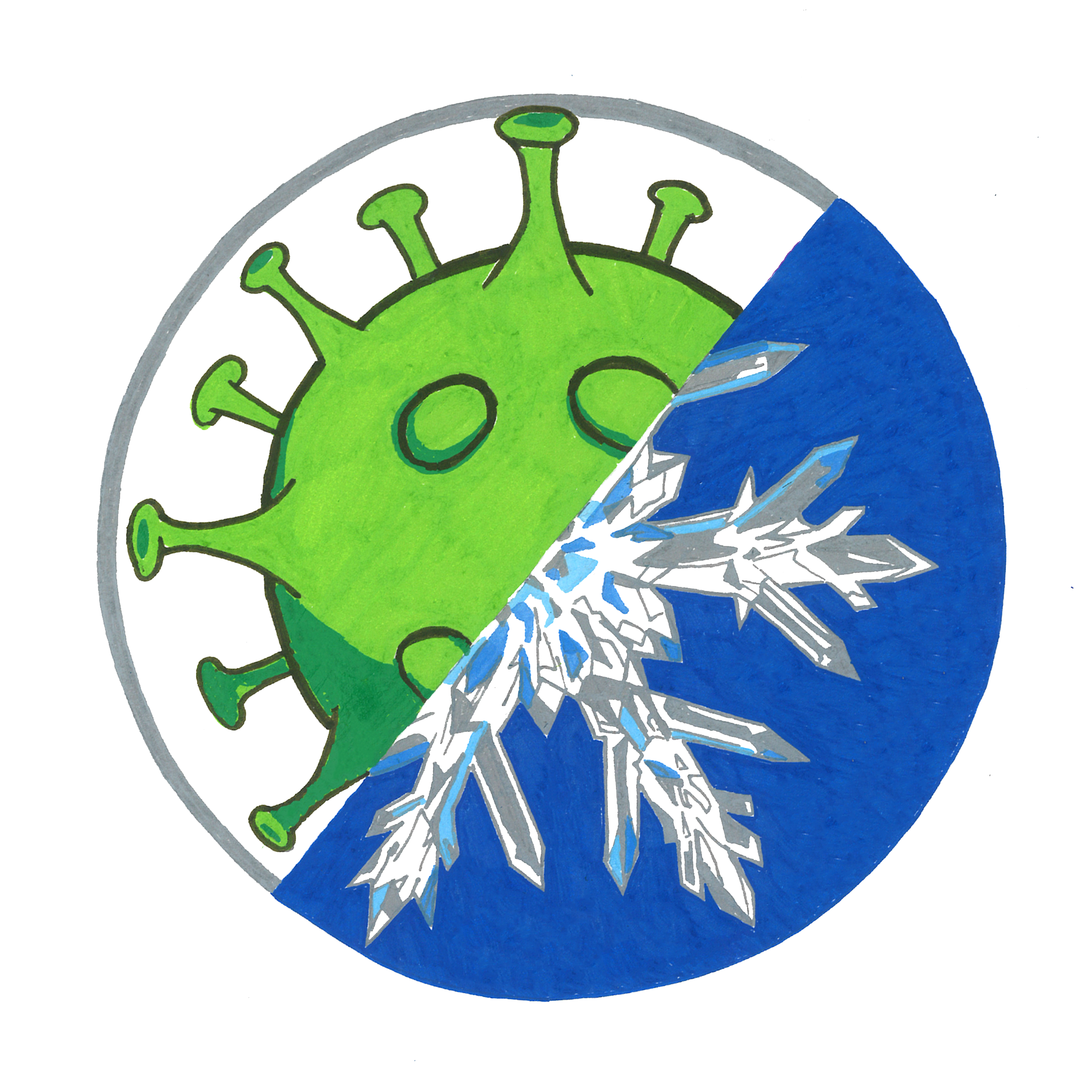Posts from October 2021
Corona virus vs. Ice Crystals
You can not escape from the aerosols
The COVID-19 aerosols are slowly disappearing from the air and with
that social activities are starting to pick up again. Especially now, it is
important for me to maintain the wonderful habits we picked up during the
quarantine. So, it's time for a brand new (science) blog!
Since posting the June blog, I have certainly not been inactive. In July, I managed
to write a proceedings paper for an instrumentation conference that was held in
San Diego, California. This SPIE conference, Society of Photographic Instrumentation
Engineers, focused on polarisation instruments and remote sensing. I will tell you
more about this topic later!
At the moment, as the drawing of this blog illustrates, I have started an
investigation into (the scattering of light by) ice crystals. But why ice, and
how does this connect to my search for "biosignatures” and my models of an
Earth-like exoplanet outside our solar system?
Well... Not only is looking at beautiful ice crystals a wonderful occupation, but
apart from the fact that you can stare endlessly at the infinite different possible
shapes and structures, they are very important in, for instance, climate studies.
The effects of the presence of ices in the atmosphere are still very unclear though
could potentially cause major changes in the temperature of a planet, including
our Earth. I do think that the climate is very important, but what I am looking
for is how light is scattered by ice crystals. The scattering properties of ice
strongly depend on the shape and size of the individual crystals. For example,
many small crystals will reflect more sunlight than less large ones. In many
models, researchers assume that the ice crystals look like a hexagon. This shape
makes it easier to calculate how light is scattered, but we can actually say that
the assumption is not entirely correct. In fact, if all the ice crystals in the
atmosphere had a hexagonal shape, we would witness many more halos.
Important lesson 4:
Do not try to google "ice halo" (ijs halo) in Dutch. You will only find pictures
of (very tasty) ice cream in cups.
Ice halos are beautiful optical effects that are created by the refraction of
sunlight. There are various types of halos that can be created. The most commonly
known ice halo is the 22° halo. It gets its name from the fact that the radius
of the circle is 22° with the light source located in the centre of the
circle.
Okay, I am deviating from the subject, because why are ice crystals so important
for my research? Our Earth's atmosphere contains many thin ice clouds that scatter
sunlight in a different way than the spherical (liquid) water clouds. If I want
to investigate whether I can measure the signals of life on Earth through the
clouds, I also need to understand the effects of ice clouds above the Earth's
surface. That is what I am working on at the moment. So, in the coming months
there will be updates about my new passion: ice crystals.
